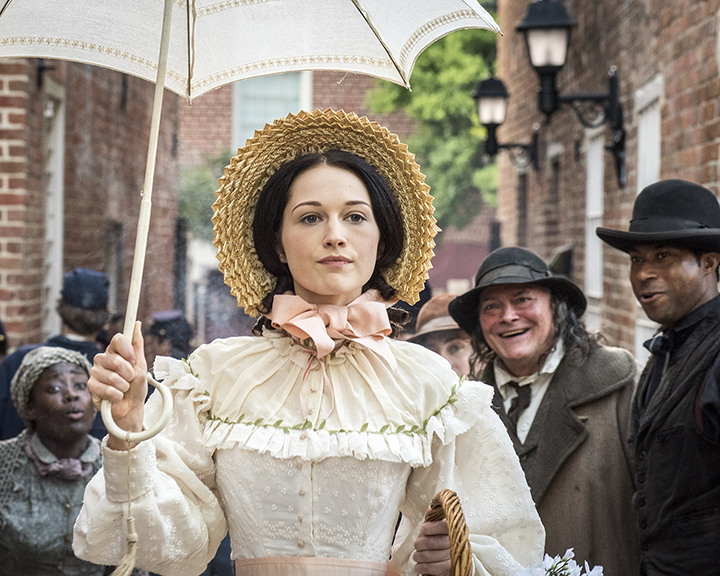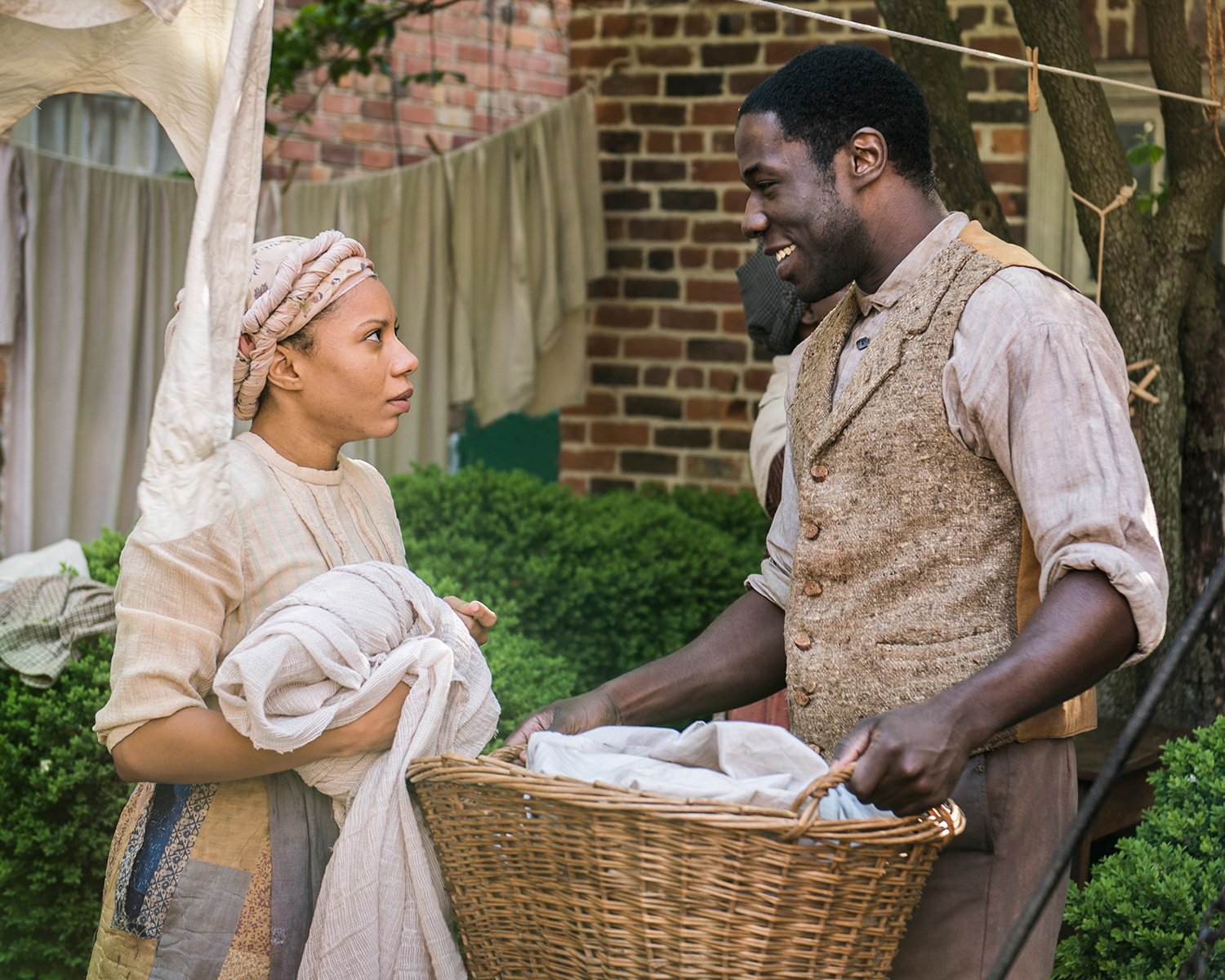Exploring Mercy Street: Series Premiere
January 23, 2016 Leave a Comment
Click here to read more on the new PBS series in part two of “Exploring Mercy Street.”
Mercy Street, a new dramatic series presented by PBS, is seeking to offer a new take on the Civil War. Set in Alexandria, Virginia, the program focuses on the Mansion House Hospital, a onetime luxury hotel. Requisitioned by the Union Army, the facility is transformed into a way station for maimed and dying soldiers, and a wartime home to those caring for them.
Much of the program’s dramatic prospects flow from the location. Alexandria was once included within the original boundaries of the District of Columbia, separated fifteen years before the Civil War. A long-time port in the slave trade and located just down the Potomac River from Robert E. Lee’s plantation in Arlington, it was well within the South culturally speaking, though it wouldn’t be part of the Confederacy for long. Only one day after Virginia’s secession was ratified, U.S. Army troops entered the town, and would remain there for the duration of the war.
Alexandria swiftly became a major center for Union logistics in the cockpit that was the war’s Eastern Theater. While this marked an occupation for Confederate sympathizers, the town was liberated ground for escaped slaves. This ongoing limbo of military administration makes it a ripe setting for characters in a Civil War story.
 The pilot of Mercy Street introduces two protagonists: Mary Phinney (Mary Elizabeth Winstead) and Emma Green (Hannah James). Both are novice nurses who find themselves navigating the unfamiliar waters of the war, but their backgrounds echo its divide. Phinney is the New England-born widow of a German nobleman – a running joke in the premiere – and a confirmed abolitionist. Green, meanwhile, is the hoop-skirted, parasol-wielding elder daughter of the Mansion House Hotel owners, who develops an interest in providing solace for Confederate patients.
The pilot of Mercy Street introduces two protagonists: Mary Phinney (Mary Elizabeth Winstead) and Emma Green (Hannah James). Both are novice nurses who find themselves navigating the unfamiliar waters of the war, but their backgrounds echo its divide. Phinney is the New England-born widow of a German nobleman – a running joke in the premiere – and a confirmed abolitionist. Green, meanwhile, is the hoop-skirted, parasol-wielding elder daughter of the Mansion House Hotel owners, who develops an interest in providing solace for Confederate patients.
The Greens remain in Alexandria in the hope of retaining their fortune, living in their mansion, the Carlyle House, which is still in existence today. Patriarch James Sr. (Gary Cole) and clubfooted son James “Jimmy” Jr. (Brad Koed) choose to focus on business, and by not donning gray uniforms they seem to collaborate with Union forces – a difficult prospect for mother Jane (Donna Murphy). Younger daughter Alice (AnnaSophia Robb), like her sister, pines for a beau she believes is off fighting at the front, but shows even greater allegiance to the trappings of belledom.
The hospital is the home for much of the rest of the cast. In charge is Dr. Jed Foster (Josh Radnor), a headstrong, morphine-dependent modern (for the era) surgeon, with Maryland plantation roots but a cosmopolitan education. The three antagonists are Anne Hastings (Tara Summers), an experienced and jealous English nurse who revels in recounting her work with Florence Nightingale in the Crimean War. Dr. Byron Hale (Norbert Leo Butz),a martinet of an Army surgeon who is intolerant of medical innovation or initiative, and Silas Bullen (Wade Williams), a bog-standard crooked Army quartermaster-type who is the hospital’s steward.
Likewise working at Mansion House are Samuel Diggs (McKinley Belcher), a free man who has been trained in medicine and new surgical techniques but can’t openly use his skills, and Aurelia Johnson (Shalita Grant), an escaped slave (known in Union-occupied territory as “contraband”) working as a laundress. Meanwhile, Belinda Gibson (L. Scott Caldwell) is a house slave for the Green family who was offered freedom but rejected it for the familiarity of bondage. They are the only African American characters in the program, and regrettably seem, so far at least, to be relegated to supporting status.
The opening episode concerns itself mostly with introducing these characters and their wartime milieu. Of particular focus are the blood-spattered surroundings, stacks of severed limbs, and generally unsanitary, desperate conditions of mid-19th century medicine. The gore pushes the PBS drama envelope, though not too far.
 While a hospital setting, particularly one behind the front lines, is fairly novel for a Civil War story, many of the show’s elements, are pretty familiar. There’s the wealthy southern family with Confederate sympathies facing challenges on the home front , complete with sisters coming of age amidst the conflict. There’s that family’s domestic slave, loyal and supportive in a way that recalls a quite specific racial archetype. And there’s a cohort of conniving and corrupt Union officers. These are stock characters, and have been for a long time.
While a hospital setting, particularly one behind the front lines, is fairly novel for a Civil War story, many of the show’s elements, are pretty familiar. There’s the wealthy southern family with Confederate sympathies facing challenges on the home front , complete with sisters coming of age amidst the conflict. There’s that family’s domestic slave, loyal and supportive in a way that recalls a quite specific racial archetype. And there’s a cohort of conniving and corrupt Union officers. These are stock characters, and have been for a long time.
After all, Mercy Street is merely the latest in a long line of on-screen Civil War stories that stretches back a century. Their influence is certainly visible in this new series, though how this era is being depicted has taken on some new shades given generations of discussions over race and the place of the war in history.
Click here to read more on the new PBS series in part two of “Exploring Mercy Street.”
 Passport
Passport







0 thoughts on “Exploring Mercy Street: Series Premiere”